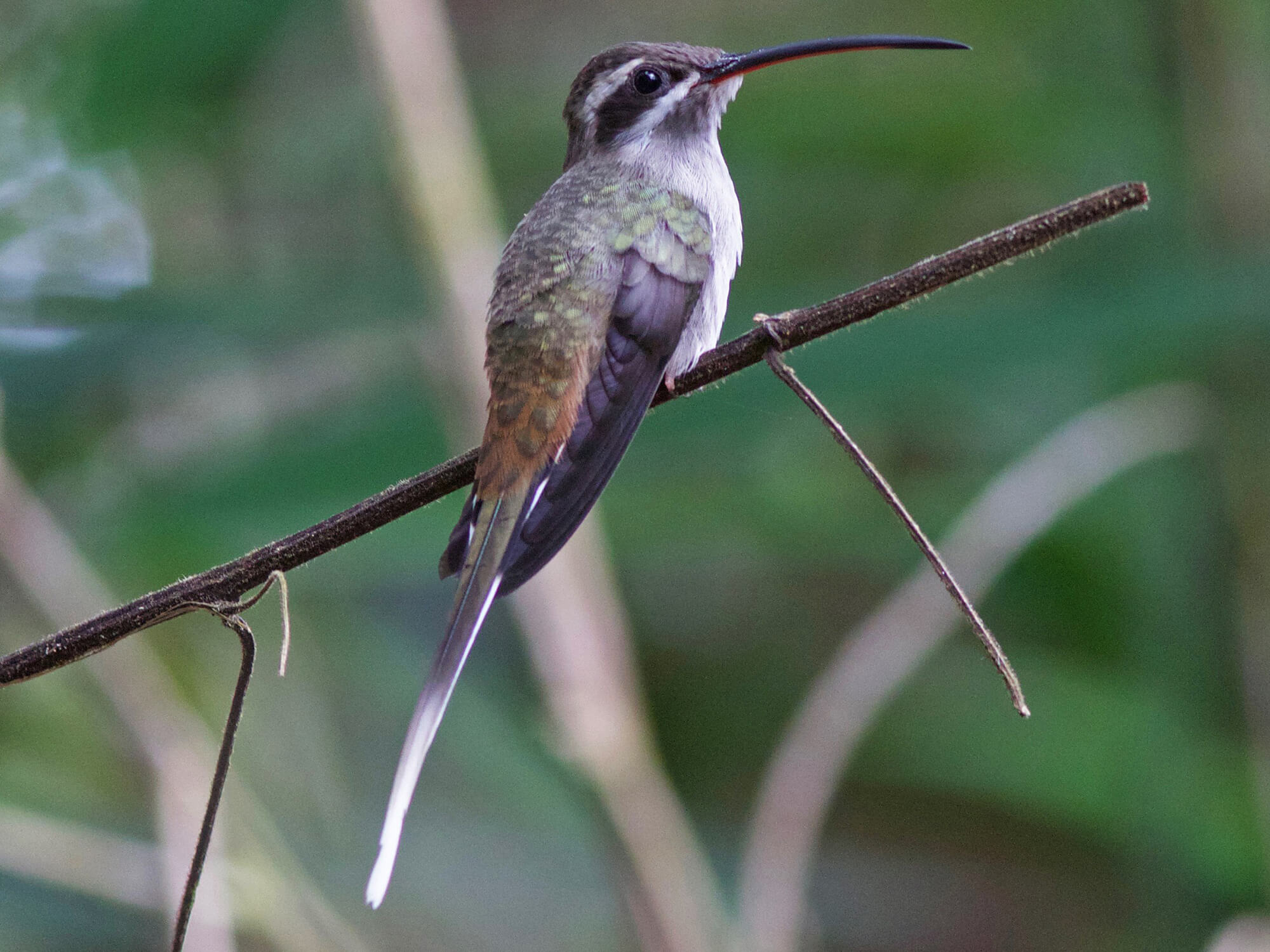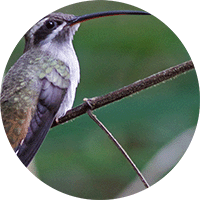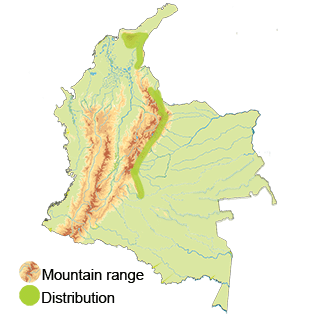Sooty-capped Hermit
The Sooty-capped Hermit (Phaethornis augusti)
Appearance: The Sooty-capped Hermit is a medium-sized hummingbird with a distinctively dark brown to blackish cap on its head, giving it its name. It has a largely green plumage with a contrasting whitish to pale cinnamon belly. The tail is long and slightly forked, and the bill is typically straight and relatively long compared to other hummingbird species.
Habitat: The Sooty-capped Hermit inhabits montane and cloud forests in the Andes of Colombia, usually found at mid to high elevations. It prefers dense vegetation and forest edges where it can forage for nectar from flowering plants and insects.
Behavior: Like other hummingbirds, the Sooty-capped Hermit feeds on nectar from flowers using its specialized long bill and tongue. It is known for its relatively solitary nature and can be territorial when it comes to feeding areas.
Breeding: The breeding behavior of the Sooty-capped Hermit involves courtship displays by males to attract females, often through aerial displays and vocalizations. The female constructs a cup-shaped nest usually placed on a tree branch using plant fibers and other materials.
Conservation Status:
- The conservation status of the Sooty-capped Hermit is not evaluated separately, but it is generally considered of least concern based on a wider range assessment.
- However, as with many species in the region, its habitat in the Colombian Andes is threatened by deforestation, habitat degradation, and climate change, which could potentially impact its long-term survival.
In conclusion, the Sooty-capped Hermit is a distinct hummingbird species found in Colombia's Andean region, known for its appearance, habitat preferences, behavior, and breeding habits. Continued conservation efforts to protect its habitat are essential for the preservation of this species and its ecosystem in Colombia.
Distribution
The Sooty-capped Hermit (Phaethornis augusti)
Eastern Andes: The Eastern Andes region of Colombia, known for its diverse birdlife, provides suitable habitat for the Sooty-capped Hermit. This species can be found in montane and cloud forests, as well as forest edges and clearings at mid to high elevations within the Eastern Andes.
4. Other Forested Regions: The Sooty-capped Hermit may also be found in other forested areas across Colombia, such as in the Santa Marta Mountains.
Taxonomy
The Sooty-capped Hermit ( Phaethornis augusti)
- Kingdom: Animalia
- Phylum: Chordata
- Class: Aves (Birds)
- Order: Caprimulgiformes
- Family: Trochilidae
- Genus: Phaethornis
- Species: Phaethornis augusti
Vocalization
The Sooty-capped Hermit (Phaethornis augusti)
- Songs: The song of the Sooty-capped Hermit is typically described as a series of high-pitched, rapid, and somewhat buzzy or trilling notes. The song may vary in length and complexity but is generally delivered in a repetitive and consistent pattern. Male Sooty-capped Hermits often use their songs to establish territories, attract mates, and communicate with other individuals.
- Calls: In addition to their songs, Sooty-capped Hermit also have various calls that serve different purposes:
Contact Calls: Short, simple calls used for communication and maintaining contact with other individuals, especially in dense vegetation.
Alarm Calls: Sharp, distinct calls used to warn of potential threats or disturbances in the surroundings.
Courtship Calls: Specialized calls used during courtship displays or interactions between males and females. - Vocalization Frequency: The vocalizations of the Sooty-capped Hermit can vary in frequency, volume, and intensity based on the context. During territorial disputes or interactions with other individuals, the frequency and intensity of vocalizations may increase.
- Role in Communication: The vocalizations of the Sooty-capped Hermit are integral to social interactions, mate attraction, territorial defense, and overall communication within their habitat. These vocal signals help establish and maintain social hierarchies, minimize conflicts, and improve reproductive success in the species.





